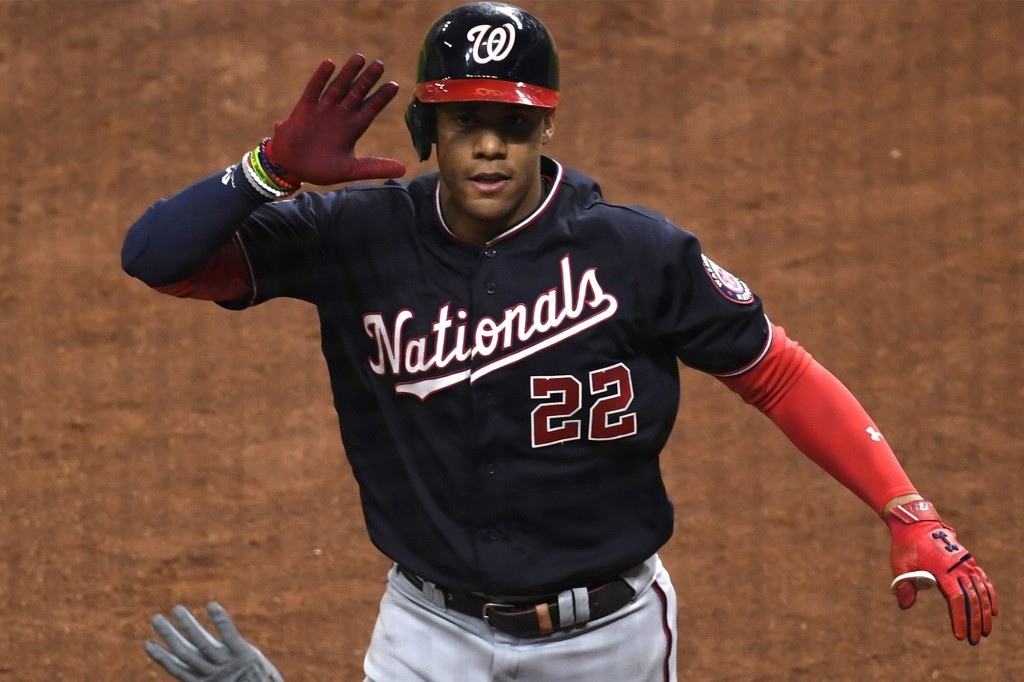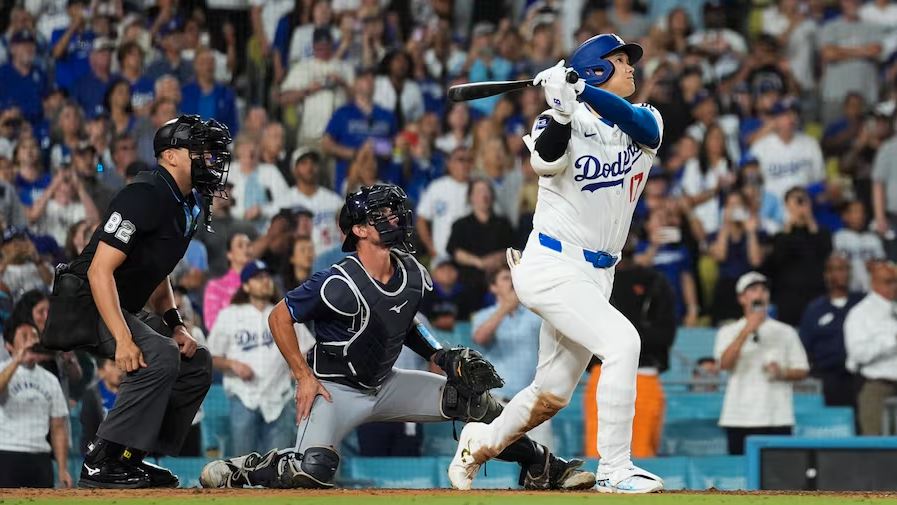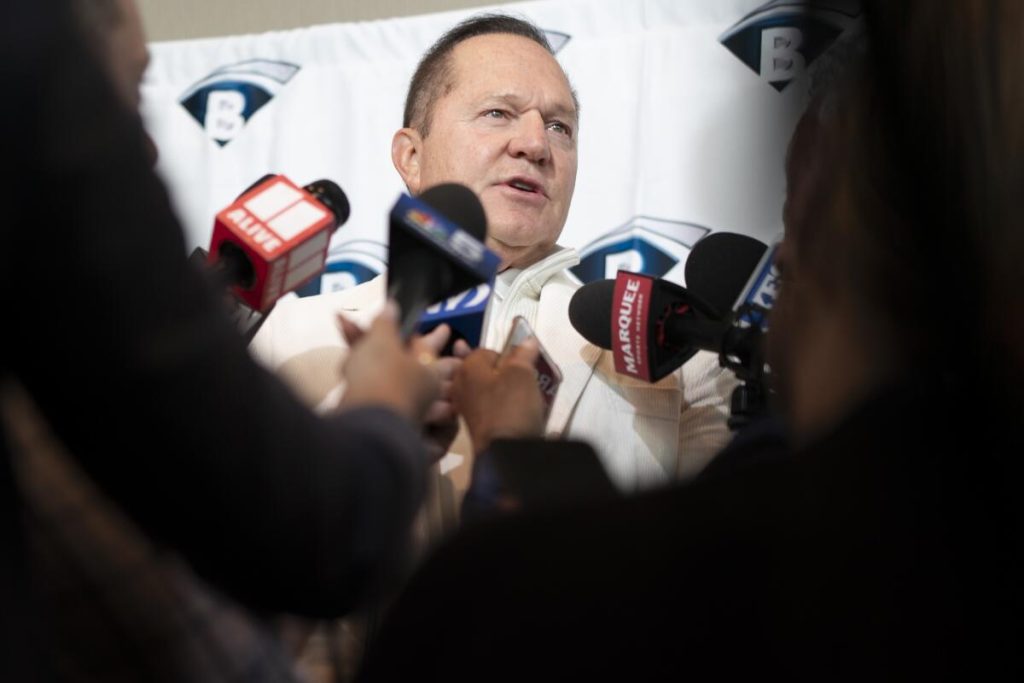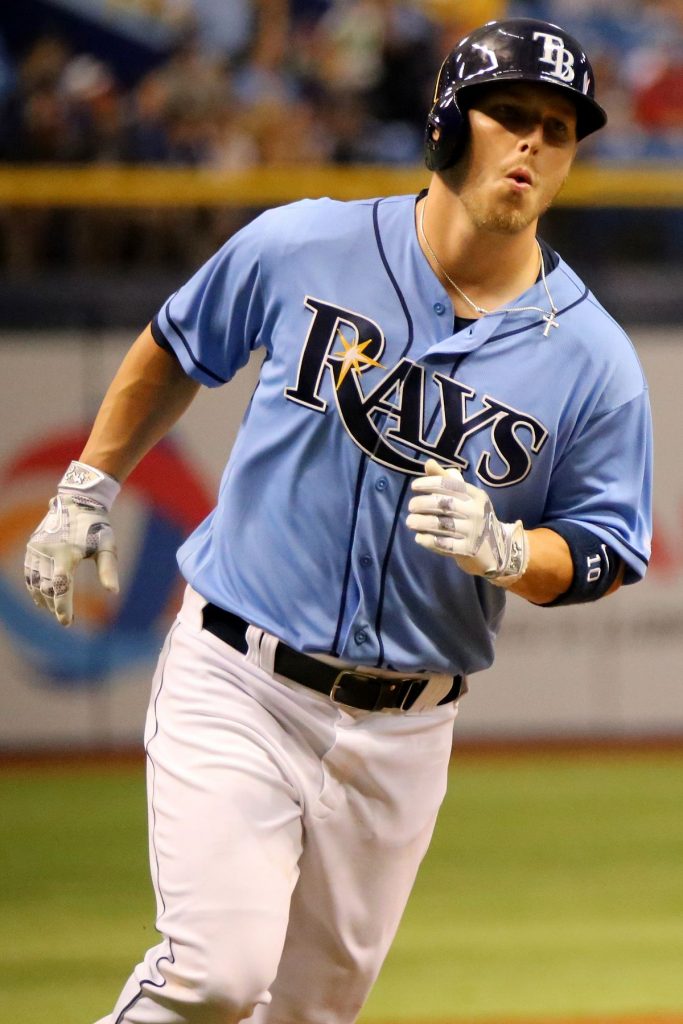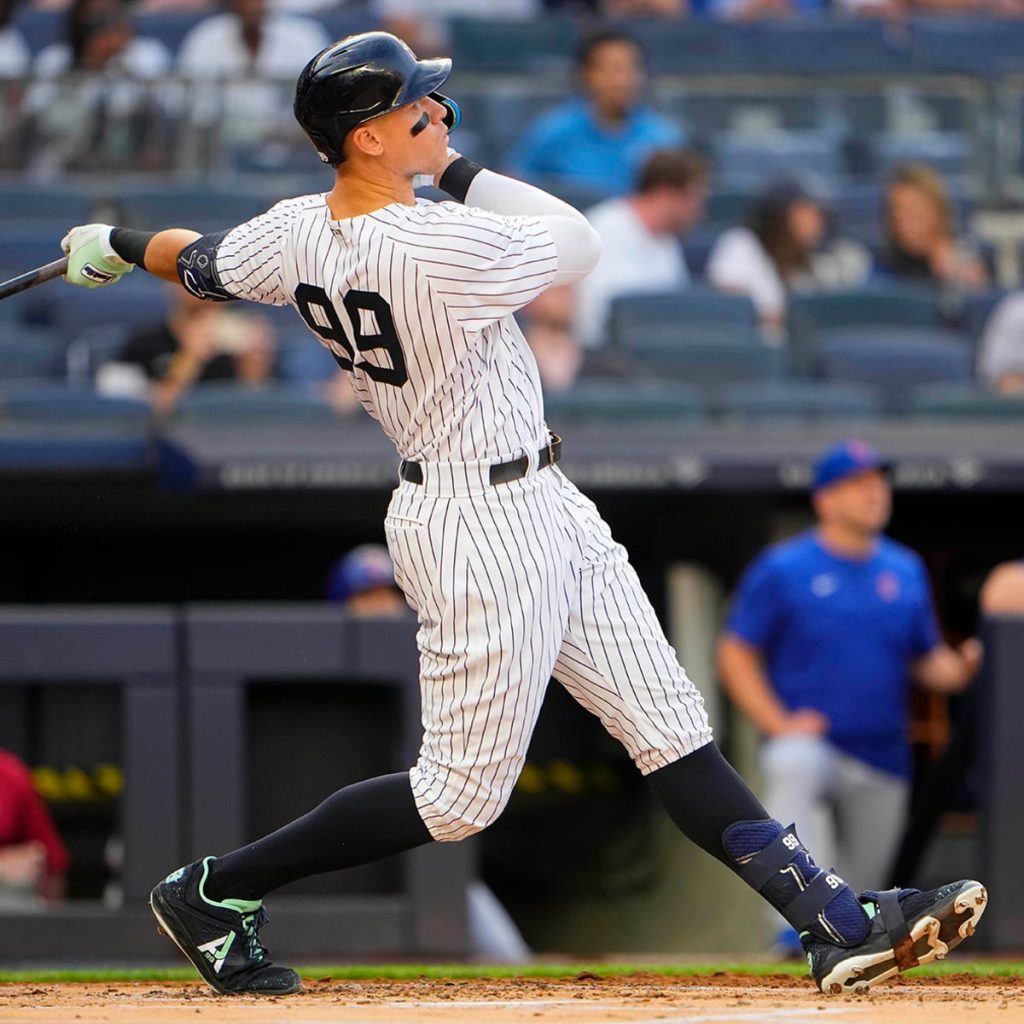I do a lot of spreadsheet work when it comes to tracking Baseball stuff that I like to track. Some of those have turned into relatively well-known resources, while others are things I generally edit privately and post to Google Sheets sporadically.
First, some Housekeeping.
Frequent commenter Will pointed this out, and also pointed out that the links on the front page of NationalsArmRace.com were well out of date. What’s ironic is, I almost never go to the non-WordPress dashboard version of this page, so I hadn’t really looked at the mess of content that was along the right-hand side. In like 10 years. Most of the links there were for long-dead blogs, or spreadsheets I did in like 2015 or 2016. So, I cleaned them up drastically. I also got rid of several useless sections (the tag cloud) and now the right-side set of links is much more streamlined with content that’s actually up-to-date.
Next, now that I’ve cleaned up the Link section called “NatArmRace Creations,” here’s a review of those links and some discussion/insight into them. I’ve got these sections organized in the order these links appear along the right-hand side.
If any of these links don’t work, please let me know. They should all be set to be viewable for those with the link.
“a All Nats Links I use“
Direct Link: Nats Links: or https://www.nationalsarmrace.com/?page_id=16709
What is it? ALL the Nats/Baseball related links I’ve ever collected and/or use frequently. This is essentially my browser bookmark set for baseball and the Nats.
History/fun facts: I got tired of trying to use bookmarks to go to the pages I visit frequently, so initially this was a private HTML page, but eventually I migrated it to be a WordPress “page” within the nationalsarmrace.com blog site.
The links in the top few sections are mostly what I visit on a daily/weekly basis; for each of our minor league affiliates I have direct links to the Local paper for gamers (if one exists that covers the team), the milb.com home page, the roster, the stats, schedule, standings, and transactions.
If you scroll down you’ll see some out of date links for the Nats, and then you’ll see entire sections devoted to thinks like PEDs, Hall of Fame, stats, etc. I’ve recently put online all the CBA pdfs I have to have them all in one place, and all those links are on there.
Minor League System Org Rankings
Direct Link: Minor League System Rankings or https://docs.google.com/spreadsheets/d/1ipxQoHgXrf0EDL0iMc2zqLu4rX7RbXani4nfY0RUJlw/edit?usp=sharing
What is it? This is a list of all the Minor League system rankings i’ve found over the years from various pundits. There are more than 175 at this point dating back to 2000 and with links to older Baseball America rankings from there. There are divider lines that denote breaks in the rankings. Yellow shaded ranks are outliers that seem to not comply with the general consensus.
History: this is an XLS i’ve maintained since the late 2000s as I started to get into tracking prospects for the team. I used to actually keep a narrative of why each teams’ ranking rose or fell, but that proved to be too difficult to maintain (its still at the far right side dating back to 2010).
2025 MLB Draft Order
Direct Link: 2025 MLB Draft Order or https://docs.google.com/spreadsheets/d/1eOam8iWCo-n3BC9baIU06c7aBxvV9oKqANl7WDqUsys/edit?usp=sharing
What is it?. this is a working XLS that tracks the changes in the draft order as players with Qualifying Offers sign. Published/finalized with last QO-assigned signee once the last order-impacting event occurs.
History: I couldn’t find a resource elsewhere on the internet that kept the data in the way that I wanted to see it, which was driven initially by a desire to see what kind of draft picks teams were giving up when they signed QO-affiliated FAs. Other draft tracking sites (like MLB) just remove the picks as they’re lost without great detail as to what happened. I keep the team in place and adjust the number so you can see how many picks have been added or forfeited.
MLB Qualifying Offer Disposition
Direct Link: Qualifying Offer Worksheet or https://docs.google.com/spreadsheets/d/1f9oJDRmCD0rH7zVj5FlcJ65YvPiuVvpFz3dkyUhHuaI/edit?usp=sharing
What is it? Every single QO player since the system was created is tracked in this XLS, with their new contract, draft picks given up, and a judgement whether the QO “screwed” the player or not.
History: when the QO system first was devised, I was fascinated to see if players were “screwing themselves” by taking a QO. So this spreadsheet was a way to kind of judge that, and to judge the effectiveness of the system.
Opinion: I can’t stand QOs. They are the epitome of a Union negotiating a “benefit” that impacts a tiny fraction of its member base instead of addressing larger concerns. Each year around 12-14 players get offered one and accept it. That’s around 1% of the union at any given time. Half those QOs offered are from teams who have no intention of re-signing the player; they’re just gambits to net an extra draft pick from a player already heading out the door. Plus, each year a chunk of the players just re-sign and it becomes moot. It also seems that every year one or two guys really mis-read the market and end up getting screwed by the QO. This past off-season, that screwed player was clearly Nick Pivetta, who took a 4yr/$55M deal and a huge decline in AAV.
The player who probably got the MOST screwed in the history of the QO system? It was either Mike Moustakas in 2017 or more likely our own Ian Desmond in 2015, who turned down a $100M contract from the Nats to play the market, found zero buyers, and ended up taking a 1 year $8M deal in which he moved to left field.
The Big Board
Direct Link: The Big Board or https://docs.google.com/spreadsheets/d/186nm-v5F-zTCoR2Be7TFYM3e2cZ-gYi2WVqJLEkHdmc/edit?usp=sharing
What is it? Updated rosters for every Nats major and minor league franchise, from the MLB all the way to the DSL. Each year has two tabs: one for the Rosters, one for the Releases.
History/fun facts: This document was the initial brainchild of an O.G. Natmosphere staple in Brian Oliver, who maintained the old Nationals Farm Authority site. From there, another big-time Nats fan named “SpringfieldFan” took over the XLS updating for a long time (the current online XLS dates from 2010, so we’ve lost the first few years of Oliver’s ownership). In Dec 2019 they transferred control to myself, and i’ve been updating it ever since.
Updates I’ve made since I took over:
- I’ve added milb.com/baseball-reference.com links for every player.
- I have added color coding for in-season promotions/demotions.
- I’ve added in current age columns for all players
- I added the XST section for players who seemed to be missing but not released but not assigned to a team.
- I add URLs documenting releases if I can.
- I try to keep the actual starters in the main positions they’re holding per team.
- I try to keep the rotations accurate, and in the synced order with the big team across the system.
- I mostly keep the bullpen roles accurate, especially in the upper levels, but in the lower levels it’s fluid.
- This year I just added a running count of the entire system, given MLB’s new 165-person limit.
On a daily/weekly basis I’m updating transactions (DL trips, promotions, demotions, releases, MLFA signings, etc), confirming the rotation order in each level, and adjusting the starters. To do this, I’m completely indebted to Luke Erickson and his daily work at NationalsProspects.com basically summarizing the same. If/when Luke decides to hang it up on this daily work, I’m not sure I’ll have the time to do it myself, but for now, Luke seems game to keep going.
The Nats Draft Tracker
Direct Link: Draft Tracker or https://docs.google.com/spreadsheets/d/1Qd5DS9GlmkQOEh_zGhOvlhHK0EegqY1uJB4mLGmRBaY/edit?usp=sharing
What is it? A spreadsheet that has every single Nats draft pick since the team moved to DC in 2005, along with key information such as position, draft round, overall draft pick, their school, initial assignment, when they become Rule-5 eligible, and their bonus amount.
History/fun facts: I’m not sure who the original author was of this resource, but I do know that Erickson owned it for a time, as did SpringfieldFan. I’m also not sure exactly when I took over updating the data, but it was probably Dec 2019 as well.
Updates I’ve made since I took over:
- Added in milb.com links for every player
- Changed the color coding for readability; green means active in Nats system, blue means released from Nats sytem, etc.
- Did a ton of googling about players we drafted but who didn’t sign to put in the correct disposition from older drafts. This is easier for more recent drafts, but harder for older players.
- Began adding two draft artifacts I maintain every year: a Draft Signing worksheet with twitter links for the players, notes, and NDFAs. Plus I maintain a “Local Drafted Player worksheet” with every player drafted who has DC/MD/VA ties. These are all now in the Draft Tracker.
I’m not updating this on a daily basis, but do periodically go through and update for player releases, Rule-5 status in a class, etc. On a yearly basis i’m adding the new class details plus the two worksheets mentioned. And once in a blue moon i’ll google unsigned players from prior classes to see where they are and update the roster. I recently abandoned the “level” as impossible to maintain accurately and just turned it into “roster status” to track release dates for players.
Nats IFA Tracker
Direct Link: IFA Tracker or https://docs.google.com/spreadsheets/d/1ksPorXhEHhtkNAGqxrJWqUFkvioMgoWhBU50uaZstc8/edit?usp=sharing
What is it? This is an emulation of the Draft Tracker, only for the International Free Agent classes. There’s a set of columns for each “class,” that includes Name, DOB, age at signing, position, country of origin, initial assignment (which is almost always the DSL), Rule5 eligibility date, and known signing bonus.
History/fun facts: I created this with the Jan 2023 class, then have been building it backwards one year at a time. I have it back to 2015 right now, but probably could continue to build it backwards by digging through draft class announcements and our big board releases over the years. However, much past the 2015 IFA class all it would be would be a cut-n-paste job of dozens of kids who got released before they turned 20, and the value doesn’t seem to be there.
The bonus pools are quite sketchy in the international market, but I’m pretty close to having the entire pool accounted for in the last few seasons. Well, not 2023, where i’m off more than $100k. I have no idea how bonus dollars work; can a team sign whoever it wants if the dollars are under a certain amount? Kind of like how you can sign NDFAs to your heart’s content for domestic players? Or does it all count towards the yearly dollar amount?
The IFA tracker also shows that we sign a slew of players each year and don’t announce the bonus amount, which I can only assume means its a nominal amount (like $2k or $5k). Also, we announce a “class” on January 15th each year (what used to be July 2nd until they pivoted the date thanks to Covid), but then they continue to sign IFAs throughout the year. If a player signs in a given year, I still call them part of that draft class.
MLB cancelled the July 2nd signing date in 2020 for Covid, hence no 2020 class, but they still managed to sign a couple guys in late 2020, who are now listed in that year’s class.
Should I build this backwards until we get closer to the “dark days” of Smiley Gonzalez and Jim Bowden? Maybe.
Nationals Prospect Ranks
Direct Link: Nationals Prospect Rankings or https://docs.google.com/spreadsheets/d/1Dtx_W2CN19W2EyRyQ17iaSkoyc51u1qR/edit?usp=sharing&ouid=102402795225850924380&rtpof=true&sd=true
What is it? This is a canonical list of EVERY prospect ranking i’ve ever found for the Nats farm system, from the most recently announced (Fangraphs in early June), back to Baseball America in 2004. More than 260 lists, with direct links whenever I could provide it. This sheet also has some cool information per player: their position, the year by year starting level (with red shading that indicates they’re repeating a level), their signing bonus, acquisition method and their signing/draft year. I’ve recently added their milb.com links and an active flag for sorting.
History: i’ve privately maintained this XLS since the Nats moved to Washington and update it every time a new list is released. Periodically I’ll update/upload it to google for announcement.
Note: i’ver never paid for BaseballProspectus, so i’m missing most of their lists over the years. I do pay for the Athletic, BaseballAmerica, D1baseball.com, and ESPN+ so all of those are there.
I’ve taken to highlighting in yellow the “outlier” rankings per player as I ingest them, which helps when i do the writeups/reviews of prospect rankings in this space. So if you see a rank that’s highlighted in yellow it probably is an outlier as compared to the rest of the ranking for that player in that year.
Lastly, my personal rankings are in Green.
Opening Day Starters
Direct link: Opening Day Starters or https://docs.google.com/spreadsheets/d/1Mv8gLgJOuJHEAf_pXNwPWGCNRL4RnYEyulH6rxMuudA/edit?usp=sharing
What is it?: just a list of the opening day starters for every team, dating back to 2000. I have always had a fascination with these guys, and there’s a bunch of trivia questions in there. Baseball-Reference now has the same data at their site per team, which is really cool.
I usually do a post the day after opening day and will update it then.
Other random artifacts not always online: As alluded to above, I maintain a few other random spreadsheets and documents, mostly locally, but do periodically upload copies of them. But, if anyone is interested in these things I could throw them onto Google.
- Nationals 40-man Roster tracking document: maintained in a Text file locally. This is mostly useful to me because I keep track of major transactions here, and it’s a useful way for me to quickly grab acquisition dates for stuff.
- Top 100 prospect tracking: this used to be more comprehensive, but how basically just a collection of pundit top 100 prospect lists for the Minors with Nats guys highlighted. Maintained in a Text file locally. I update this every time someone publishes a “Top 100 prospects in the minors” link.
- Nats Minor League Rotations (now just season beginning and ending): maintained in a Text file locally. Only really updated a few times a year; opening day and closing day.
- Nats Trading Partners: Maintained in a text file locally, updated whenever we make a trade. Fun fact: this team has not made a SINGLE TRADE with Baltimore since 2001. We havn’t traded with Houston since 2007, Colorado since 2009. It’s crazy how we trade with some teams constantly but others almost never.
- Nats Catcher Depth Chart: Maintained in a text file locally, updated several times a year when we have Catcher movement/transactions.
- Nats Attendance and Home Opener stats: Maintained in a text file locally, used to do an annual post on the same topic.
- Nats Payroll worksheet: abandoned recently, Cots does a better job.
- Nats Options worksheet: abandonded recently, Roster Resource does a better job.
Plus for all of baseball i’ve got stuff like:
- MLB Franchise Financial Overview: this is an XLS I put together from some other sources I maintain to put all the core financial details of each MLB franchise in one place: It has the RSN revenue amounts and ranks, each team’s MSA rank and DMA rank for comparison, their Forbes valuation and 2023’s payroll to see who’s skimping and who is spending. It’s a subset of data on the Sports/Winner/City xls below but updated to 2023 figures.
- Sports/Winner/City: a huge spreadsheet that tracks all four major sports in the USA to track franchise movement, champions, most recent year each city won a title, who held multiple sports titles at once, etc.
- Manager roster: used to answer the question, “What percentage of managers were Catchers?” Answer, its not as many as you think. I updated it recently to support a Quora answer I was crafting.
- GM Rankings and Roster: difficult to keep updated, especially “ranking” GM/front offices, but its current to the latest moves.
- Player Demographics: annually updated when the opening day rosters are announced. When I get 2025’s figures i’ll do a quick post and throw it into Google Sheets.
- MLB Team Payroll worksheets: annually updated, then finds its way to other XLS here.
- Hall of Fame Roster: I manually maintain a HoF roster to be able to quickly filter by position.
- Sports Revenues Annually across major sports; updated when we get more macro level revenue figures for the sport.
- Realignment Scenario Worksheet: I did a post on this
- Verducci Effect worksheet: abandoned. In the macro his theory was disproven, though his point was not to apply his theory to every pitcher, just certain starters.
- Ball in Play Studies Worksheet: subject of a great 2012 post I did about the amount of time the ball is in play for major sports, probably needs updating.
- Opener Worksheet: a worksheet that attempts to show how a team could use a staff entirely made of relievers, to see if it could work. Short Answer: i don’t think it can work.
- MLB Team Playoff History: made up to show just how much parity there is in MLB. 66% of the teams in the league have made the playoffs in the last three years and every team in the league has made the playoffs in the last 8, as example stats.
If I was more diligent i’d have all these artifacts in the cloud instead of locally, so everyone could see. If anyone wants to see some of these artifacts I can always upload them somewhere.
Anyway, hope you enjoy the main links above, which was the reason I posted this in the first place.
